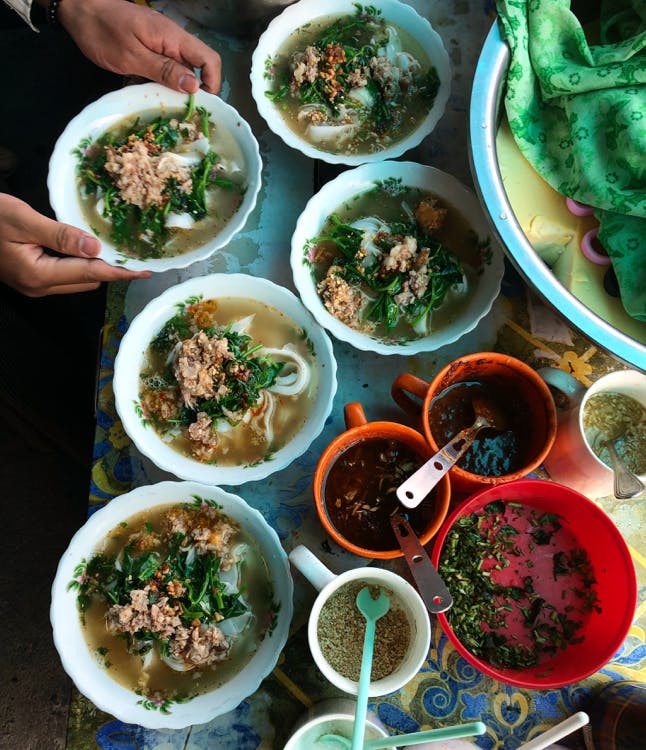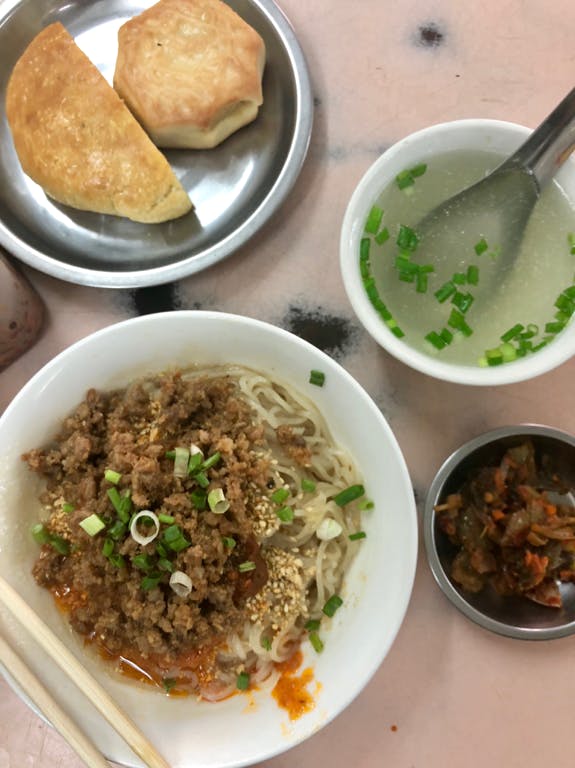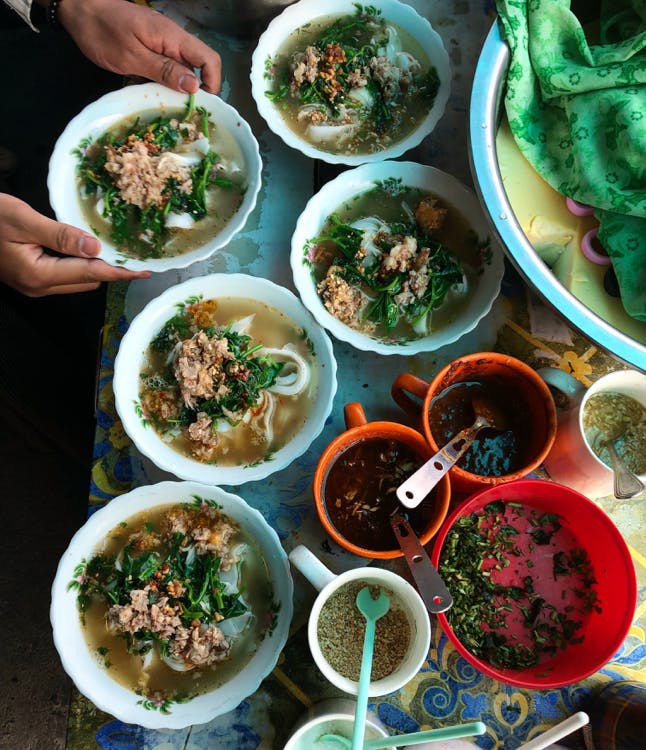Transporting Through Time & Place with A Bowl of Noodles.

Both my parents are ethnically Indian, but they’re Burmese by nationality. My dad was born-and-raised in Burma, and my mom was raised. My older brother and two older sisters were also born in Burma. I, the youngest of the four children, was the only one in my immediate family born in the United States, a few years after my parents immigrated to Southern California in 1979. Growing up, my connection to Burma then was really only through the food my mom would cook—spicy curries of shrimp or beef with coconut rice, fermented tea leaf salad (lahphet thoke), fried noodles (kaukswe), and lentil-laden biryanis were just some of the traditional and flavorful Burmese eats I grew up with. But my favorite was mohinga, the spicy sour and fishy noodle soup and unofficial national dish of Burma. So when Desmond Tan, owner of Burma Inc, invited me to tag along on his yearly trip to Burma, I couldn’t refuse the opportunity to eat my weight in the dish. And during my 14 days on the trip-- I nearly did. But there was another noodle dish that I discovered on the trip that I never knew about before called Shan Noodles—it blew my mind.
There are 14 states in Burma—the Shan state borders China and is an almost two-hour flight north of Yangon, the former capital of Burma located in the country’s southern tip. Shan noodles come from the Shan state, appropriately enough. From my brief but numerous encounters of the dish throughout the trip, no two versions were the same. Some versions had thick noodles while others thin; some versions had broth served on the side while others had no broth at all. The two constants, however, were the inclusion of fresh rice noodles topped with a mildy spicy tomato-ey mixture of meat.
The first version I had was on accident, and it happened to be the first thing I ate in Yangon. It was at a small shop around the corner from the hotel we were staying at, and I had no idea what I was eating. I simply saw the shop was packed with locals slurping away at noodles (definitely a good sign at any eating establishment anywhere), and decided to pop in—I just had to have what they were having.

This particular version pictured above contained thin rice noodles topped with the spicy ground pork mixture (there was a chopped chicken option available, as well), thinly sliced green onions, and sesame seeds. It was served with a side of chicken broth as well as some spicy pickled mustard greens. Perhaps I was just hangry after a long twenty-hour flight, but it was an excellent first bite in Burma.
The next encounter with Shan noodles came two days later, this time in the town of Namshan in the actual Shan state. Namshan is a small town where Desmond sources his fermented tea leaf (lahpet) for his tea leaf salad he serves at his restaurants in the Bay Area. To get to Namshan, we flew from Yangon to Lashio, then took a four hour car ride through winding mountains. Here in this town, in a small family run noodle shop/liquor store hybrid off the town’s main drag, I was served one of the most delicious and memorable dishes I ate the entire trip. The time the version of the Shan Noodles came with thicker wider fresh rice noodles topped with the spicy tomato-ey ground pork mixture along with spinach like greens. But the kicker: the entire thing was immersed in broth. Spicy pickled mustard greens were served on the side--it was an incredible eating experience.

The next Shan noodle I ate was served at breakfast at our hotel in Inle Lake, located in the Southern part of the Shan State. Here there were thin rice noodles served with a more intensely tomato sauce, large greens, and no broth. Spicy pickled mustard greens were served on the side, like the other versions. The flavor profile was similar to the other versions, yet was unique and the chef’s own version.

When I moved to San Francsico in 2007 and discovered Burma Superstar, I was shocked to learn that not only could I get Burmese food outside of my mom’s kitchen, but that the food tasted so similar to what my mom made. In fact, the mohinga in particular, my favorite dish ever, was so incredibly spot on in taste to my mom’s version that I almost couldn’t tell the difference (except for the fact that the restaurant’s version included the traditional garnish of fried lentils whereas my mom used crumbled store-bought tortilla chips, which is definitely not what they use in Burma as it turns out). Crunchies and jokes aside, the broth and the other condiments in the mohinga at Burma Superstar brought me back and continues to bring me back to my childhood.
When I came back from Burma recently and was craving some Shan noodles, I was delighted to learn that Burma Love served their own version of the dish. Like the versions I ate in Burma, there were rice noodles topped with a mildly spiced meat mixture, here with larger pieces of chicken stewed in the tomato sauce instead of the ground pork I usually ordered (Desmond also includes a tofu option for the vegetarians out there). The Shan noodles are also topped with pickled mustard greens, spinach like greens, green onions, cilantro, and crushed peanuts and are mixed tableside. It had the same overall flavor profile as the ones I tasted in Burma, but also like the ones I tasted in Burma, was distinctly different and unique in its own right. Most importantly, however, it was delicious. And, just like the mohinga at Burma Superstar, it brings me back in time, this time not to my mother’s kitchen but rather to my actual motherland of Myanmar.

Each time I eat at Desmond’s restaurants, I am reminded of the incredible power of food to bring back memories and transport people through time and place.
